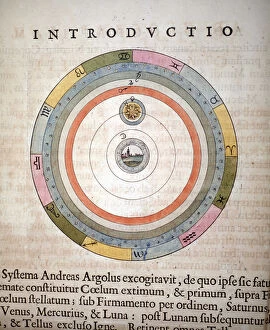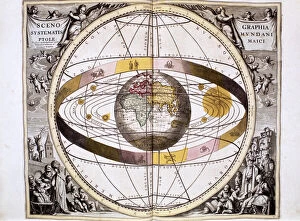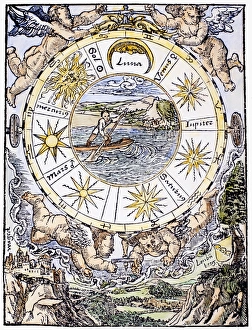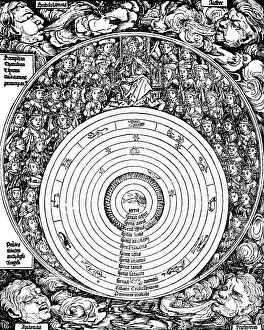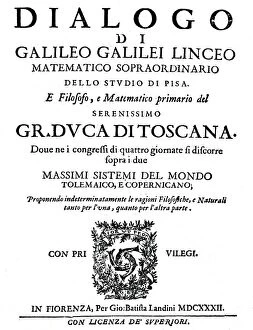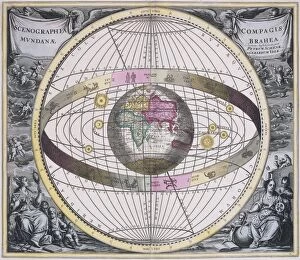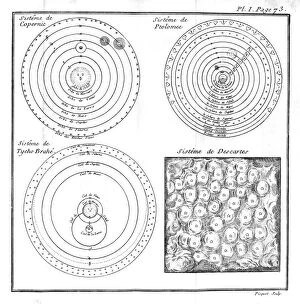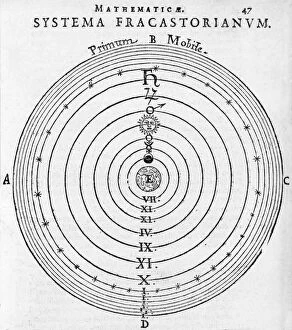Geocentric Collection (page 2)
In the 14th century, the Catalan Atlas showcased a geocentric view of the universe, with Earth at its center
All Professionally Made to Order for Quick Shipping
In the 14th century, the Catalan Atlas showcased a geocentric view of the universe, with Earth at its center. This ancient belief was further perpetuated by Urania, the Muse of Astronomy, depicted in front of Argus and holding a telescope. One notable figure who challenged this geocentric notion was Galileo. In his pursuit of knowledge, he engaged in discussions about astronomy with his daughter Maria Celeste. Together, they questioned the prevailing beliefs and sought to unravel the mysteries of our solar system. The geocentric system posited that Earth stood still while all celestial bodies revolved around it. This concept can be seen in an Egyptian solar system model and Ptolemy's map published in 1482. Claude Ptolemy himself was a Greek scholar and astronomer whose works greatly influenced medieval astronomy. As time progressed into the 16th century, advancements were made in understanding our place within the cosmos. Zodiac signs became popular symbols representing different aspects of human life as connected to celestial movements. Galileo's groundbreaking book "Dialogo sopra i due massimi sistemi del mondo, " published in 1632, challenged traditional views once again. Its frontispiece engraving depicted Galileo presenting his heliocentric model to society—a revolutionary departure from centuries-old beliefs. Despite these scientific strides towards understanding our place in space, it is fascinating to look back on how deeply ingrained geocentrism once was within human consciousness. It serves as a reminder that even long-held convictions can be overturned by new discoveries and relentless curiosity about our universe's wonders.




